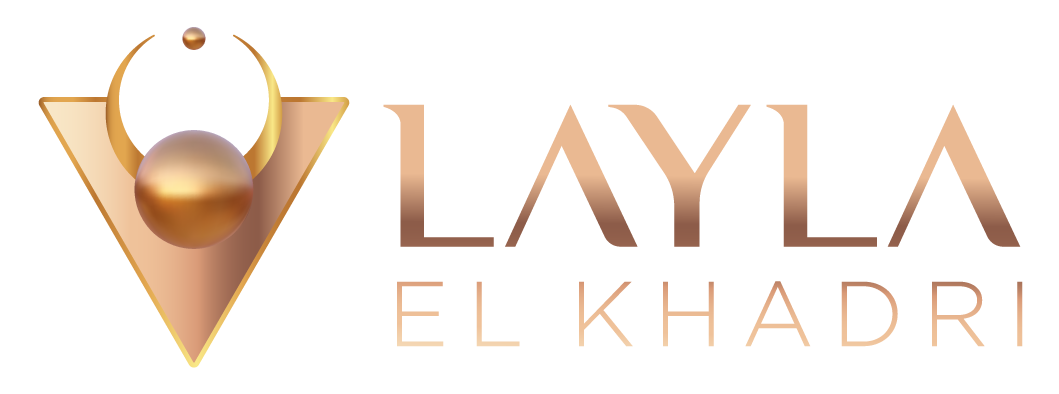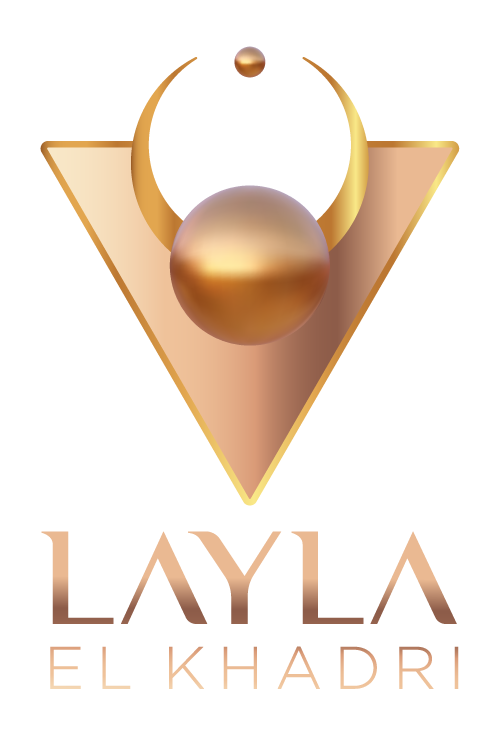4 Steps to Unleash Your Creative Potential
Allow yourself to create the life you truly desire. You are the artist! -Layla El Khadri
Who hasn’t been stuck in a problem, emotional issue, or apparently dead point in life and wished to find “a new way” to solve it? How many times do we try again and again the same old ways, wishing for a new and genius idea to get us successfully out of the hamster wheel?
I’ve always been considered a creative person in a crafty field, but in my social skills and my capacity for problem solving I have always dreamt of having more creative solutions.
Over time, thanks to my studies, my curiosity, and constant searching and exploring I began to become a more aware and conscious person. I realized how great our creative potential is and how little we actually use it on our own behalf.
Taping into your creativity triggers your consciousness to awake.
It’s like we are afraid of creativity somewhere deep in our subconscious belief systems because it means new, unknown, and different.
In a way, being creative means challenging the established and bringing something new. It means to believe in oneself. It means giving your intuition, dreams, or ideas more credibility than the “carved in stone laws” that have always ruled us.
Unleashing our creative side is like saying: “Ok, maybe I know a better way to do it!”
We learn from a young age that this is wrong, pretentious, and uncomfortable for others.
Well… we are missing a gold mine! Our creativity is our highest and most divine asset. It is what connects us with God (in whatever form you believe- it doesn’t matter). Creativity is what bring us closer to the Creator.
Let’s analyze the factors at play in the creative process and some easy ways to unleash our genius minds! Because I have come to believe (and it is being proven by scientific research) that we are all very creative by nature.
We are born creators, weavers, and shapers of reality. -Dave Jacobs
1. Recognize the creator in you.
All around us is energy, in different forms and manifestations. We have total freedom to rearrange that energy and we have the capability to do it. It is just about finding the way to do it.
The only knowledge necessary to have in order to create our reality is to know that we can. Start believing that you can solve the problem and half the problem is already solved.
The moment I allowed myself to rearrange the reality around me in a creative way, doors started opening. I could experience how reality was not as fixed as I thought. I realized my creativity is greater than I thought and I started to believe in myself more.
Automatically, others started to believe in me as well.
2. Keep your “Lizard” at bay
The reason why many of us never get to believe in ourselves, our ideas, or our creative power is the worst enemy of creativity: the “Censor.”
Also known as the “Lizard,” the censor is the remaining part of our reptilian brain. Its roll was to guarantee our survival when we were in more primitive stages. It is a brain whose goal is to keep us safe, alive, and secure. It is the brain that looks for predators in everything that moves around us and tells us to remain in the safe shadows of the forest. It does this by avoiding change, by following safe paths, and by making sure we stay forever in our comfort zone.
Nowadays, this reptilian brain doesn’t have as much work to do, so it is there to criticize us and stop us from becoming great!
It is the voice that, in an imperative, constricting, fatherly tone reprimands you: Don´t even try, you are not good for that!
That is not a good idea! Stop dreaming!
Use your head in a rational way! Be like the others…
It is the part of ourselves that looks at the scratch of our new business plan and says: It is not perfect!
It is the voice that, in the middle of a creative problem-solving session, tells you: This is worthless, they will fight again!
Bad news: it will always be there.
Good news: the less you give it importance the weaker it gets. I barely hear it anymore!
3. Identify your critics and the reasons behind their criticism.
Very often, in our environment, someone else plays the role of the censor for us. Normally they are what I call the frustrated artists- people like you and me that once dreamt of being more creative but whose “Lizard” censor voice was too loud for them to hear themselves and, therefore, they became frustrated instead.
Now they can’t tolerate seeing others in the same position, others who have the courage to actually go for it. So, any little step that you take towards becoming more creative reminds them of their own failure and they need to make sure they scream as loud as their own censor did.
4. Accept good criticisms
Very different are the “good critics,” and their criticism is also radically different. We definitely need good criticism. Constructive critics are actually very beneficial to the creative process since they bring different perspectives that we might have otherwise ignored.
A good critic triggers the precious “ajajá!” moments; the moment when you finally find what wasn’t working and everything falls into place.
How to differentiate them is the key. If a critic comes from a careful and objective (as much as possible) observation of your work and their criticism is phrased in a positive constructive way, it will not discourage you but encourage you to deliver better work next time. It may even trigger new ideas and excite your creativity even more.
5. Let go of expectations & share!
Any creation, no matter the discipline or the degree of expertise, deserves to be shared. By sharing it, the flow of creativity gets excited and we let go of the need to be perfect.
When creativity seems to fade it does not fade because it hates you or because you’ve become suddenly unlucky. It fades because it got covered over with expectations, pressure and demands from your life.
Practicing detachment from the outcome of my work has allowed me to jump in much bigger pools without the panic of drowning, and as a result, I can deliver a higher quality work.
I have realized that focusing too much on the outcome is setting myself up for failure.
When attention and energy are focused on doing a good job, and not on analyzing how others will receive it or what the outcome will be, it is easier to tune into creativity and perform with higher productivity.
I like to remember that many, if not most, of our well-recognized artists, creators, and inventors were once censored, criticized, and ridiculed. They had little or no recognition and acceptance of their work at some point in their career because they were challenging the norm. They were ready to close their ears to their annoying censor’s destructive criticism and just go for it with all their creative power.
7. Activities that trigger “great ideas”
It’s not a joke that best ideas show up in the shower. It’s when our brains are in what is called “relaxed de-focused” states that new ideas can make their way through our fixation with the problem and light our lightbulbs with the solution.
If you are missing the muse do some of these activities:
Long car drive (already known)
Shower or bath
Clean the house
Cook (if you enjoy cooking)
Walk in nature, swim in a lake
Lie in a hammock on a beach paradise (my favorite)
And keep a little journal to write the ideas in with you because they can slip away as fast as they show up!
Allow yourself to try and fail and focus on the process of creation itself instead of being focused on the perfection of the result. This way it’s easy to experience the joy of being an artist/creative, instead of the suffering of being a self-critic. Is easy to actually start feeling that creative impulse and let it manifest into whatever you need.
The world needs that special talent, idea, or creation that only you can bring. It is your gift and your responsibility to bring it into the world- and none of your business to judge it! So, let it flow!
Artist Featured: Brad Kunkle

